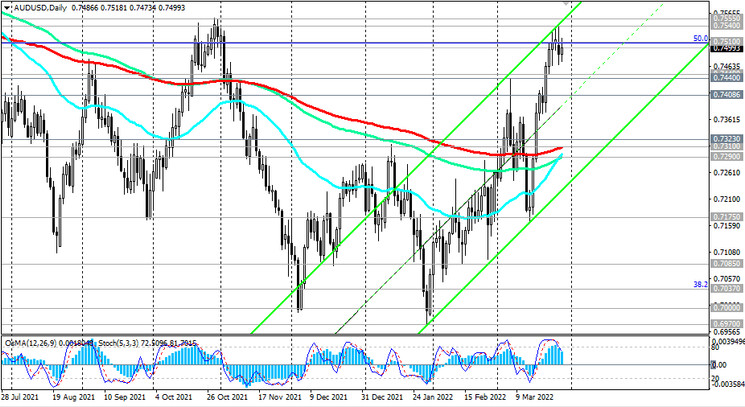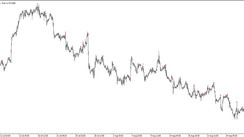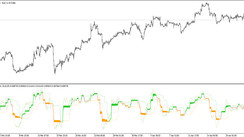Despite the decline during today's Asian trading session, the DXY dollar index remains positive, remaining in the zone of 12-month highs near the 98.85 mark.
The dollar is receiving support by remaining a defensive asset (at the moment, investors prefer it to other traditional defensive assets - the franc and gold), and from the rising yield of US government bonds. As you know, it grows with increasing sales of government bonds. Thus, the yield on 10-year US bonds recently exceeded 2.50%, which corresponds to the levels of 3 years ago.

During his speeches last week, Fed Chairman Jerome Powell confirmed the possibility of a one-time increase in interest rates by 50 basis points at once. In total, Fed leaders are planning 6 more interest rate hikes this year. Thus, by the end of the year, the Fed interest rate should be at least 2% or more if it increases at Fed meetings not by 0.25%, but by 50%.
Under normal economic conditions, the tightening of the monetary policy of the central bank leads to the strengthening of the national currency. Most financial market participants expect this from the dollar. However, expectations of its significant strengthening may not come true if the Fed leaders fail to cope with the accelerating rise in inflation in the US, which, according to the latest data, reached a 40-year high (annual consumer price index (CPI) growth in February was +7.8%).
It is worth noting that the Fed has not raised the key rate by 0.50% since May 2000, which indicates its extreme concern about accelerating inflation in the US.
The military conflict in Ukraine against the backdrop of Western sanctions against Russia may lead to an even greater increase in energy and food prices around the world, which will cause increased inflationary pressure on the global economy.
In the meantime, against the general backdrop of geopolitical and economic uncertainty, the Australian economy looks quite stable, which contributes to the strengthening of the Australian currency.
This morning, the Australian government released the country's draft budget for the 2022-2023 fiscal year. It provides for tax cuts on fuel, an easing of the tax burden for people with low and middle incomes, as well as one-time payments to almost a quarter of the country's population to support the financial condition of households.
The government expects that in the 2022-23 financial year, the country's economy will grow by +3.5%, the unemployment rate will fall to a minimum since the early 1970s (in February, unemployment in Australia fell to 4.0%, the lowest since August 2008), and salaries will increase by about 3.25%. This, in turn, will allow the Reserve Bank of Australia to start normalizing monetary policy.
Immediately after the publication of Australia's draft budget for 2022-2023, S&P Global Ratings affirmed Australia's sovereign rating at AAA with a stable outlook.
Australia's economic recovery is accelerating and the fiscal trajectory is ahead of earlier expectations, S&P said.
This recovery, in particular, is confirmed by the data published this morning on the volume of retail sales, which added 1.8% in February. The indicator reached such a high level for the second time in the history of observations.
The AUD is totally strengthening in the foreign exchange market, also receiving support from rising commodity prices. Australia, as you know, is the world's largest exporter of coal and iron ore. Among the country's most important export commodities are also LNG, gold, and agricultural products. The AUD is also strengthening against the US dollar, despite the fact that its position remains quite strong due to continued demand for the dollar as a safe asset.
Thus, at the time of publication of this article, the AUD/USD pair is traded near the 0.7500 mark, maintaining a positive trend. A break of the key long-term resistance level 0.7610 and further gains could finally push AUD/USD into a long-term bull market (see Technical Analysis and Trading Recommendations).

The next meeting of the RBA will take place next week. Most likely, until this meeting, AUD/USD will remain trading near the current levels, unless, of course, the US dollar seizes the initiative again, and another collapse occurs in the global stock and commodity markets.





